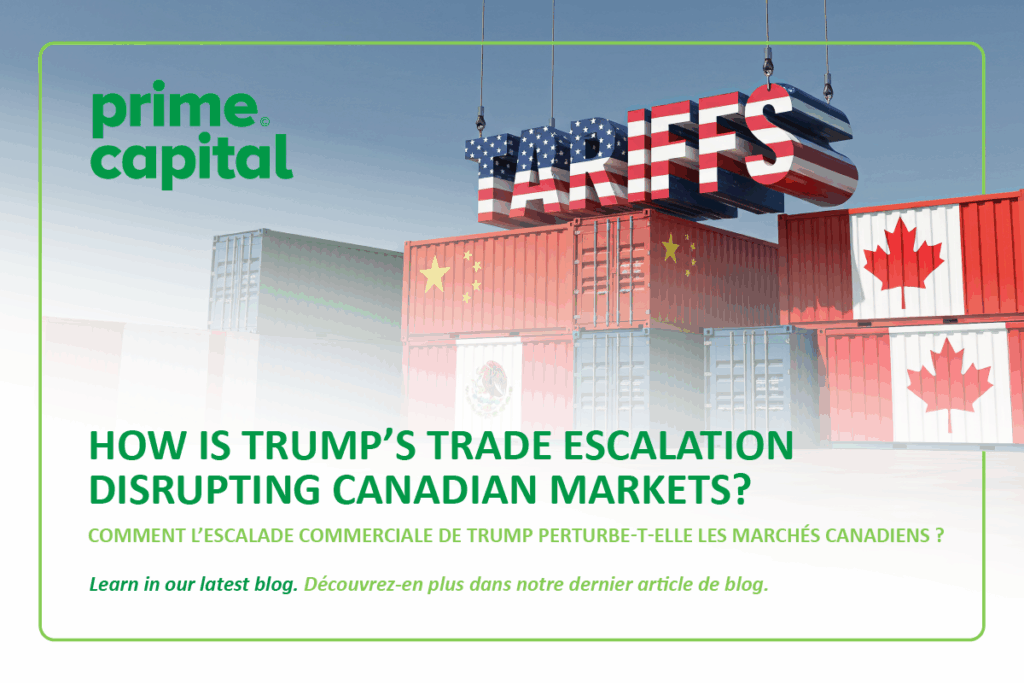April 2025 has marked a seismic shift in global trade relations — and Canadian businesses are bracing for impact.
Just weeks after proposing sweeping 25% tariffs on Canadian imports, former U.S. President Donald Trump has unveiled a far broader, global trade offensive. His latest announcement: a new “reciprocal tariff system” that raises import duties on dozens of countries — including China, Mexico, Germany, Japan, and South Korea. In response, China swiftly issued retaliatory tariffs, escalating fears of a full-scale trade war.
While these decisions were made outside Canada’s borders, the consequences are already washing ashore. From supply chain disruptions to sharp market selloffs and growing recession warnings, Canadian exporters now face a global economy increasingly defined by uncertainty.
Let’s unpack what’s happening — and what Canadian business leaders should prepare for next.
Global Markets React: Volatility Spikes After Tariff Announcements
The global financial markets have not responded kindly to the return of trade brinkmanship.
- The S&P 500 and Nasdaq both fell by more than 6% in the days following Trump’s tariff announcement.
- The Shanghai Composite dropped nearly 4%, and the Canadian TSX saw its worst weekly performance in over a year.
- Commodity prices — including oil, lumber, and soy — have become highly volatile as traders reassess global demand under tighter trade flows.
In a joint analysis by Bloomberg and Reuters, economists warned that this round of tariffs could shave 0.6% to 1.2% off global GDP in the next 12 months if tensions worsen — a hit that would be deeply felt in open, trade-reliant economies like Canada.
What Triggered This Escalation?
The new U.S. tariff strategy — officially announced on April 3 — introduces a “reciprocal duty” model. In short, the U.S. will now match or exceed the import tariffs of any country that imposes higher rates on U.S. goods.
Key targets include:
- China – with new tariffs averaging 34% across tech, electronics, and industrial products
- Mexico – 18% average tariffs, especially on agricultural exports
- Canada, Germany, Japan, South Korea – each facing base tariffs of 10% to 15%, with potential increases depending on trade balance evaluations
Within 48 hours, China retaliated with sweeping counter-tariffs, targeting American semiconductors, aircraft components, soybeans, and energy products. Officials warned that Beijing was prepared to “fight to the end,” reigniting fears of the 2018–2020 U.S.–China trade war — a conflict that left $300 billion in trade lost and disrupted global investment flows for years.
Why This Matters for Canadian Exporters
While Canada isn’t the central player in this conflict, it sits at the crossroads of many disrupted supply chains.
1. Integrated Trade Ties with the U.S. and China
Canada exports nearly 75% of its goods to the U.S., and over 7% to China. Any slowdown or complication in those corridors—whether through direct tariffs or redirected global competition—will hit close to home.
2. Ripple Effects Through Global Supply Chains
Canadian businesses integrated into multinational supply chains may face:
- Delays and re-routing of goods
- Higher input costs due to tariffed materials or redirected trade flows
- Volatile demand as downstream buyers adjust forecasts
3. Currency and Capital Uncertainty
The Canadian dollar has weakened slightly against the U.S. dollar and Chinese yuan since the announcements — reflecting investor flight to stability. Foreign investment into Canadian equities and infrastructure projects may also slow as global risk appetite declines.
What Should Canadian Businesses Be Watching?
Here are key indicators to monitor in the coming weeks:
- Commodity Prices: Oil, wheat, timber, and aluminum are especially sensitive to global trade shifts.
- Bond Yields and Credit Spreads: Rising spreads could signal tightening credit conditions for businesses.
- Cross-Border Logistics Delays: Disruptions at ports and customs could increase turnaround times and operating costs.
- Emerging Recession Forecasts: Some economists now place the risk of a North American recession in 2025 at above 60%, depending on how deep the trade war cuts into global demand.
Prime Capital Perspective: Stay Calm, Stay Informed — and Start Preparing
This isn’t the first time Canadian businesses have navigated stormy international waters — and it won’t be the last.
But moments like this require clarity, not chaos. At Prime Capital, we believe businesses thrive when they’re equipped with not only capital — but also context.
We’re not just watching this moment pass — we’re helping our clients prepare for what’s next. Here are a few key steps Canadian business leaders can consider today:
Quick Tips for Navigating Trade Volatility:
- Model multiple financial scenarios. Stress-test your cash flow under different tariff and demand conditions.
- Review your supply chain dependencies. Identify key vendors or routes that could be affected by global slowdowns or restrictions.
- Talk to your trade partners. Maintain open dialogue with U.S. and international partners to stay ahead of potential disruptions.
- Watch currency trends. A weakening Canadian dollar can impact purchasing power and export pricing — especially in volatile sectors.
- Build a flexible inventory strategy. Adapt stock levels to prepare for longer lead times or fluctuating demand.
Our role isn’t to predict the next headline. It’s to help Canadian leaders assess their exposure, map their options, and build resilient, informed strategies — no matter how the global landscape shifts.
Final Thought: The Trade Chessboard Has Reset
The global trade landscape is shifting — fast. And while Canada may not be moving the pieces, it must still play the game. The businesses that will emerge strongest from this volatility won’t be the biggest or the boldest — they’ll be the best prepared.
Stay informed. Stay agile. And never hesitate to seek guidance as the rules of trade are rewritten in real time.





